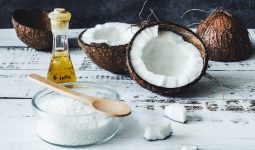If you are unfamiliar with wines or wine terminologies, the first thing that will most likely come to mind when you come across a bottle of dry wine or are asked, “What is dry wine?” is a wine that tastes dry or dries out the mouth after drinking.
However, that is simply a misconception of what dry wine means. So, what is dry wine? Dry wine is a wine with little to no residual sugar; that is, the wine is not sweet.
During the winemaking process, grape juice is converted into wine through fermentation.
In this process, yeast is added to the grape juice, which converts the grape’s sugar into alcohol.
Whether all or some of the sugar in the grape juice is converted determines the style of wine produced.
A dry wine is formed if no sugar (residual sugar) is left behind after fermentation.
Some wine drinkers often assume a dry wine leaves the mouth dry, which is not necessarily true.
If a wine produces a dry mouth sensation after consumption, it simply means it has a high amount of tannin, which is not to be confused with “dry” in the case of a dry wine, which means “no sweetness .”
Tannins are naturally occurring substances found in grapes’ skin. They prevent wine oxidation during the wine-aging process.
Another misconception associated with wine is that it is sweet if it has a fruity taste.
However, wine’s fruity note often does not correlate with its sweetness; it can have a fruity taste and still be bone dry—no sweetness whatsoever.
In addition, the dryness of wine does not equate to its alcohol level. Some wine drinkers think the drier a wine is, the higher its alcohol level.
However, dry wines do not always have a high alcohol content. Several sweet wines have very high alcohol content.
An example is Sauternes wine, a dessert wine high in alcohol and intensely sweet.
Categories of Dry Wine
To further elaborate on the question, ‘What is dry wine? ‘ Below are explained the different categories of dry wine, depending on their sugar level.
Bone Dry Wine
Bone dry wine is an extremely dry wine with less than 0.5% residual sugar.
This type of wine has been stripped of its residual sugar, and it usually contains a high tannin level, giving it a bitter and astringent mouthfeel.
Many wine drinkers can hardly detect any sweetness in this wine because the residual sugar level is extremely low.
Bone-dry wines include Bordeaux, Mourvedre, Nebbiolo, Sauvignon Blanc, Tempranillo, and Vermentino.
Medium Dry Wine
Medium-dry wines usually contain about one to two percent residual sugar, equivalent to ten to twenty grams per liter.
Examples of medium-dry wines are the dry versions of Viognier, Riesling, and Gewurztraminer.
Off-dry Wine or Semi-dry Wine
This type of wine has a sweetness of at least three percent. Most wine drinkers find it noticeably sweet because it has a higher residual sugar level than the other categories.
Different Types of Dry Wine
Wine drinkers need to know the different types of dry wine to understand it better.
Dry wine can be red or white, each with a different flavor profile.
Knowing the different types of wine would allow wine drinkers to know which wine is best suited to their taste.
The following are different types of dry red or dry white wines;
1. Cabernet Sauvignon
Cabernet Sauvignon is a Bordeaux-style dry red wine that originated in France.
It is a full-bodied wine usually made with a blend of merlot, cabernet franc, and other varieties.
It is the most planted grape variety and has a high tannin content. Its notes include olives, cherries, blackcurrant, chocolate vanilla, and herbs. It is best served with red meat.
2. Syrah
Syrah, also known as Shiraz, is made using grapes from the Rhone region in France. It usually has a spicy note with a hint of plums and dark berries.
Syrah is considered a highly versatile grape variety. The flavors produced by Syrah grapes depend on where they are grown.
If grown in a warm climate, Syrah produces flavors like anise, licorice, and baking spice, and the wine tends to be more jammy with fewer tannins.
But, if the grapes are grown in a cold climate, the wines tend to have a very high amount of tannins.
As a result, they become medium to full-bodied wines with flavors like blackberry and tobacco and a hint of earthiness. Syrah can be paired with high-quality cheese and burgers.
3. Pinot Noir
Pinot Noir is a dry red wine in the Burgundy style with earthy undertones and excellent aging potential.
It is considered the fifth most commonly grown grape worldwide in California, New Zealand, Germany, Chile, Italy, Switzerland, and Oregon.
California and Oregon are known to make exceptional varieties of this wine.
Pinot Noir is a medium-bodied wine with various flavors, such as dark cherries, strawberries, raspberries, and tobacco.
It is considered the healthiest dry red wine, and its versatility allows it to be paired with just any food.
4. Merlot
Compared to Cabernet Sauvignon, Merlot has a significantly lower amount of tannins.
As a result, it has a smooth and velvety taste with a semi-sweet flavor.
It is a dry red wine with watermelon, cherry, chocolate, and strawberry notes.
Merlot is a versatile wine that can be made in two styles: traditional Bordeaux and New World.
The grapes are harvested early to make the traditional Bordeaux style of wine. Early harvesting preserves the grapes’ acidity.
Usually, the traditional Bordeaux style of wines is medium-bodied with red fruit flavors.
On the other hand, the new world style of Merlot is usually full-bodied with black fruit flavors.
5. Cinsault
Cinsault is a grape variety that originated from Southern Rhone. It grows in places with warmer climates and produces light and fruity wines.
6. Grenache
Grenache is a Rhone-style wine that is very famous in Australia and Spain.
It is often blended with other Rhone-style wines to produce Rose and sweet wine blends.
Grenache grape variety produces fruity wines with spice and cherry flavors.
7. Petit Verdot
Like Cabernet Franc, Petit Verdot is mostly used to make blended wines, but it can also be used independently. It comes in spice and violet flavors.
8. Mourvedre
Mourvedre is a grape variety that originated in Spain. This dry red wine best suits people who love black currant and blackberry flavors.
9. Nebbiolo
Nebbiolo is a grape variety normally grown in Piedmont, Italy. It has a high level of tannin and acidity and excellent aging potential.
Prestigious wines such as Barbarescos and Barolos are produced using the Nebbiolo grape. It produces rich flavors like licorice, truffles, and rose petals.
10. Petite Sirah
Petite Sirah is a dark wine that originated in France and became popular in Argentina, Chile, California, and Australia.
They usually have a blackberry flavor with a hint of pepper and spice.
11. Zinfandel
Zinfandel originated in Croatia but became popular in California. It is a light-bodied wine with strawberry and red fruit flavors and can be used to produce sweet wines.
12. Barbera
Barbera can be found in Piedmont, Italy. It comes in a robust black flavor. The most common types of Barbera are Barbera d’Alba and Barbera d’Asti.
13. Sangiovese
Sangiovese is a dry red wine commonly found in Italy. It is medium-bodied and has flavors like cherry, plum, and strawberry.
14. Malbec
Malbec is a dry red wine that originated in France but is now popular in Argentina and the United States.
It is dark red with a high tannin concentration. It comes in black cherry, leather, coffee, and pepper flavor notes.
15. Black Muscat
Black Muscat is a light, dry red wine produced in Eastern Europe. It is delicious and available in spice, blackberry, and strawberry flavors.
16. Sauvignon Blanc
Sauvignon Blanc is considered the driest of white wines and originates from the Bordeaux region of France. It is notable for its crisp (very dry) and citrus flavors.
It is mainly produced in Bordeaux, Chile, the West Coast, the United States, New Zealand, and South Africa.
17. Chardonnay
Chardonnay is a popular dry white wine with an oaky and fruit flavor. Its variations can be found in California, Washington, and Burgundy.
Chardonnay aged in oak barrels produces vanilla, coconut, and toast flavor notes, while unoaked chardonnays give citrus and tropical fruit notes.
It is best served with buttery and creamy sauces and pairs well with risotto.
18. Pinot Grigio
Pinot Grigio is a medium dry white wine from Italy, France, the United States, and Germany.
Pinot Grigio produced in Italy has subtle mineral notes, while those produced in France have fruity notes.
It is best served with a buffalo burger with mozzarella cheese or antipasti topped with seafood and marinated fish.
19. Champagne
Champagne is a popular white wine with different varieties depending on the sugar content.
Extra brut champagne is the driest variety, containing less than 0.6% residual sugar.
Brute or extra sec wine is medium dry, while the doux variety is the sweetest.
20. Pinot Blanc
Pinot blanc is a medium-bodied, dry white wine commonly produced in Italy, France, Germany, and Austria. Its flavors include spice, apple, and almond.
21. Muscadet
Muscadet is a dry white wine produced using the Melon de Bourgogne grape variety.
It is a light-bodied wine with a spicy and tart aroma and citrus notes. It is best paired with oysters, mussels, or grilled scallops.
22. Gruner Veltliner
Gruner Veltliner is an elegant dry white wine from Austria that produces spice, peach, and pepper notes.
Depending on the grape’s ripeness, it can have peach citrus flavors.
23. Torrontes
Torrontes is a dry white wine from South America. It is a remarkable wine that produces tasting notes like lemon zest, fragrant rose, and peach.
24. Albarino
Albarino, also known as Alvarhino, is the driest white wine from Spain. It has a spicy flavor with tasting notes of lemon, grapefruit, and salt.
Chardonnay wine: toasty chardonnay wines will pair well with lobster and cheesy pasta
What to Serve With Dry Wine?
- Cabernet Sauvignon: juicy red meat like steaks, roast chicken, ahi tuna, and lamb will pair nicely with Bordeaux-style wines like Cabernet Sauvignon.
- Pinot Noir: Food containing earthy ingredients like mushrooms and truffles will pair nicely with a bottle of Pinot Noir. Pinot Noir is a light-bodied dry red wine with savory depth, making this pairing delicious.
- Syrah and Cabernet Franc: Dry red wines with spicy tasting notes, such as Syrah and Cabernet Franc, pair nicely with spicy and well-seasoned dishes.
- Rose: Cheesy dishes are best served with a bottle of Rose
- Zinfandel: Zinfandel is the best type of wine to be served with food that has a light and airy texture like mousse and filled pastry like terrines and pates.
- Malbec or Shiraz: barbecue sauce is best paired with a bottle of Malbec or Shiraz.
- Sauvignon Blanc is considered the best dry white wine. It is best paired with salad, light fish, vegetables, and dishes made with herbs.
- Pinot Gris and Albarino: these two types of wines are best paired with fish dishes like shellfish and raw fish
- Champagne: champagne is best served with dishes that have salty flavors.
- Albarino and Vermentino: Albarino and Vermentino are best served with leafy greens.
How to Store Dry Wine?
- Store at the Proper Temperature: Temperature is the most important factor when storing wine. The average temperature at which wines should be stored is 13℃. A stable temperature must be maintained; if not, the stopper of the wine bottle will get pushed out, allowing air to enter the bottle. Investing in a wine cooling system is advised, as this creates a perfect aging condition for wines.
- Store Bottles Horizontally: Storing bottles horizontally helps prevent premature aging and seepage by keeping the cork from drying.
- Store in a Dark Area: Wine should be kept from sunlight, as UV rays could damage flavor.
- Store in a Wine Fridge: Unlike a standard refrigerator, a wine fridge is made specifically for wines and keeps them at the right temperature and humidity. It helps protect wines and maintain their optimal flavor.
Conclusion
A dry wine has been stripped of its residual sugar, contrary to the common belief that dry wine refers to the dry sensation a wine produces after consumption.
So, if you ever wonder what dry wine is or know anyone who needs clarification on this topic, this article will answer all your questions.








